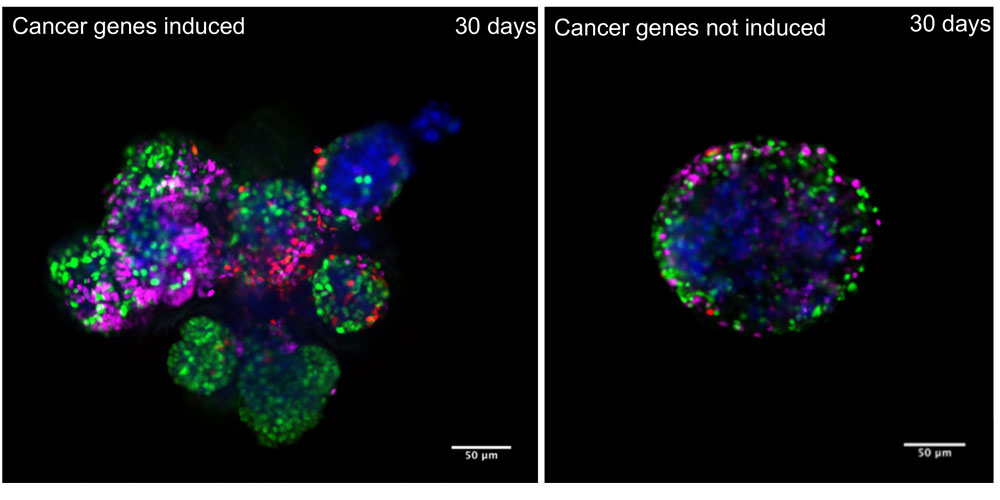Our work
Project update: New hope for cancer patients
The scientists working on this research are building a cutting-edge 3D model initially of breast cancer, but other types in future, that will enable drugs to be tested on multiple mutations at the same time. This is important as cancer is a complex disease, and for most types there is more than one mutation. However, current treatments are usually based on targeting one particular mutation. Unfortunately this often results in cancer recurring or spreading to other parts of the body.
The new model, designed by a team funded by Action Against Cancer, will enable the testing of new drug combinations and better prediction of therapy success.
In recent weeks, the scientists have successfully created new parts of the 3D model – called organoids - with different combinations of gene mutations. The system they have created enables them to switch each colour-coded mutation on and off and follow how the tumour starts and progresses.
In the images shown:
- green and blue correspond to a gene linked to an aggressive type of breast cancer;
- red represents a gene thought to cause tumour growth when mutated;
- and magenta shows a gene known to be able to cause cancer (called an oncogene).
In this particular experiment, cells were grown over 30 days. In the image on the right, the mutations were not switched on in the normal breast cells. The genes had no malignant behaviour: they were well mixed; did not grow uncontrollably; and stayed in an organised structure. This compares dramatically with the organoid on the left with the mutations switched on. The shape and size is altered, the cells started growing colonies and avoided intermixing with other mutations as they grew.
This work is leading up to answer key questions:
- how clones in the same tumour behave and interact with each other;
- how certain mutations change the aggressiveness of normal cells when they are surrounded by other mutant cells;
- how mutant cells survive;
- which mutant cells are the silent survivors, that will adapt to treatment and come back.
The team will work on different combinations of genes to cover the 20 most common mutations in breast cancer. In time they will apply different treatments to their model to assess how effective each drug is on the mutations.
The overall aim of this research programme is to enable doctors to predict whether a tumour will spread, and if so where to, and most importantly what the best combination of drugs will be to prevent or to reduce relapse. In addition, this work should lead to much more effective personalised treatment, bringing new hope for cancer patients.
To read more about this research programme, click here.
To read a mini interview with the scientist leading this research, click here.

